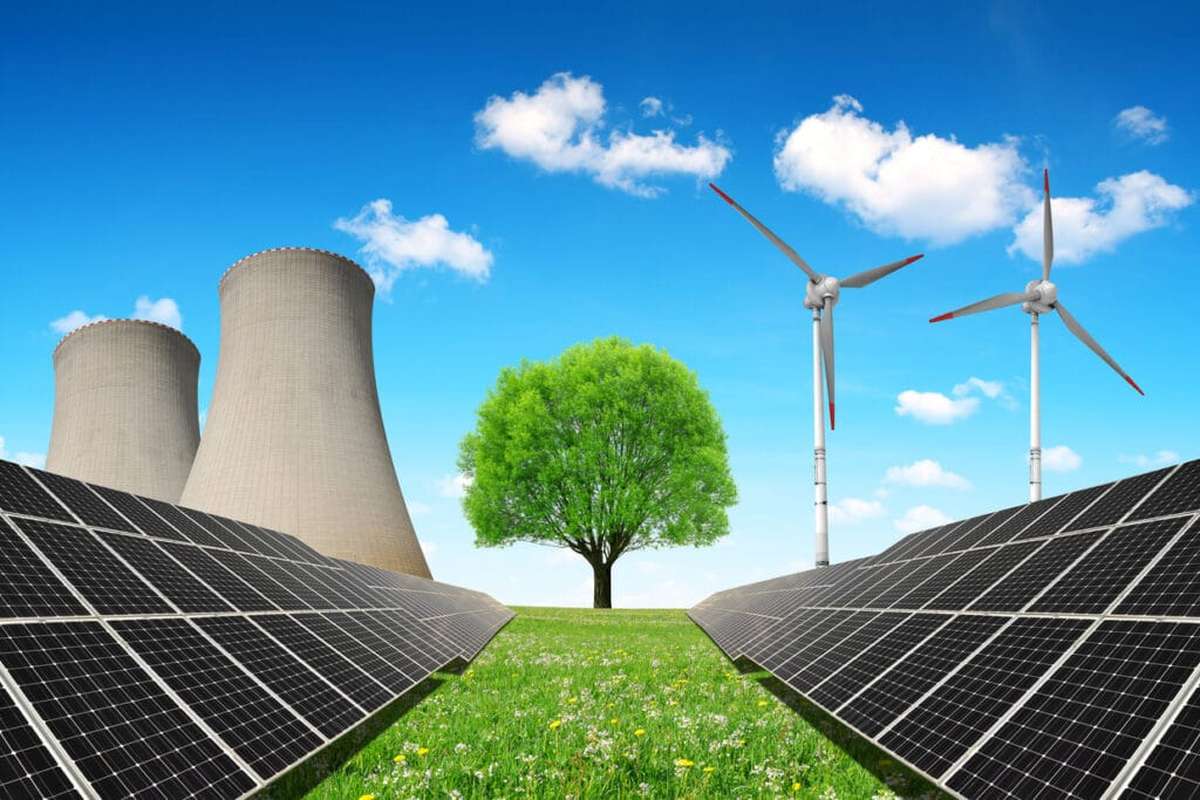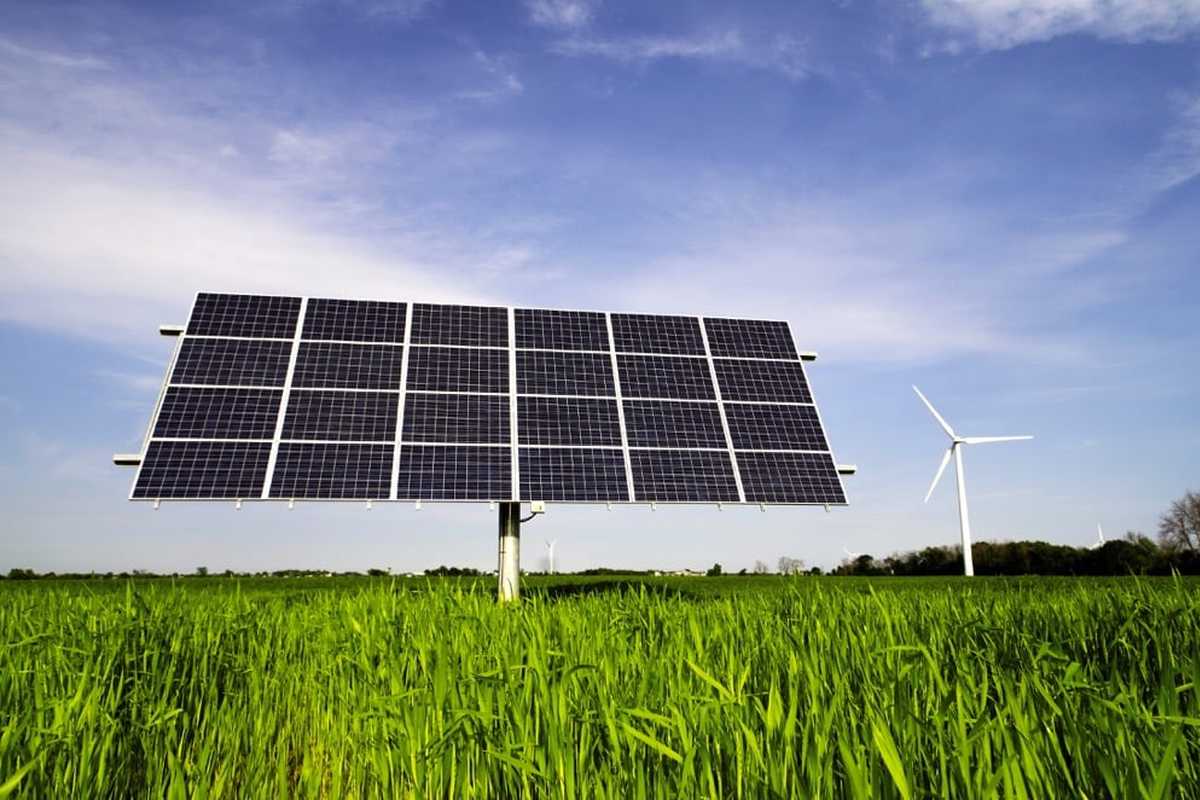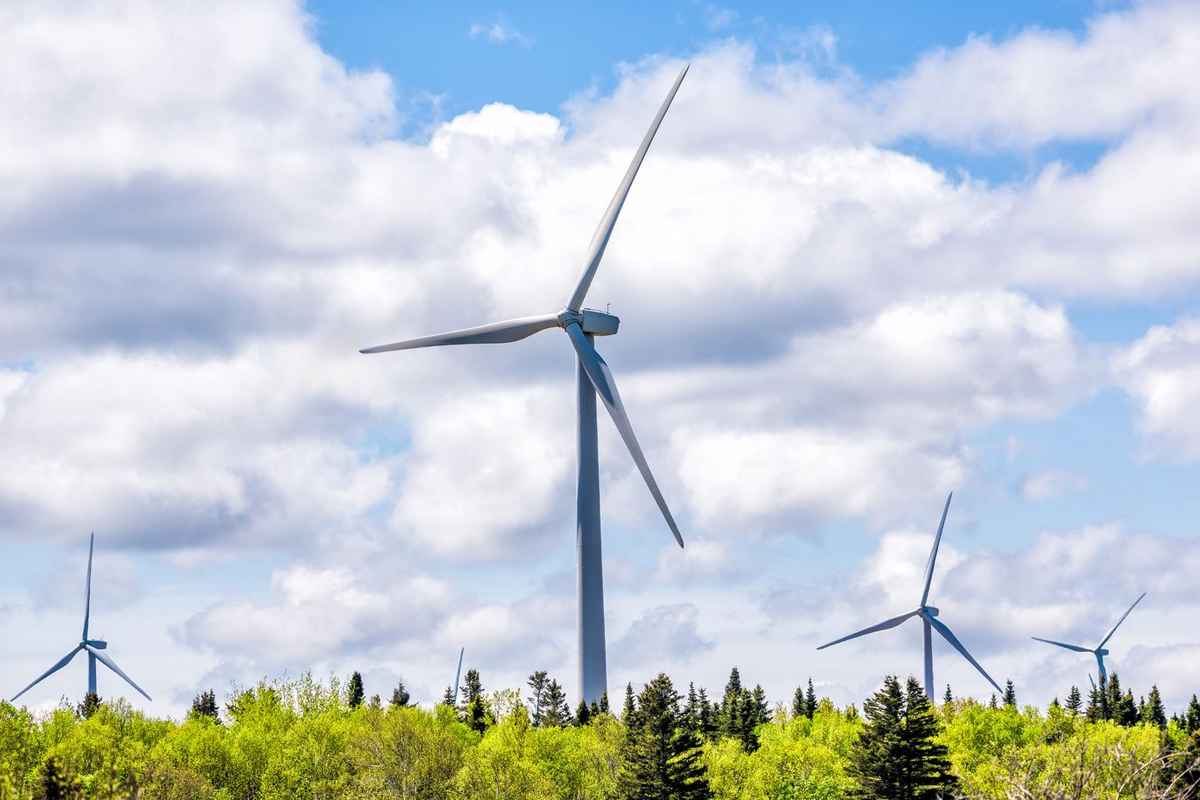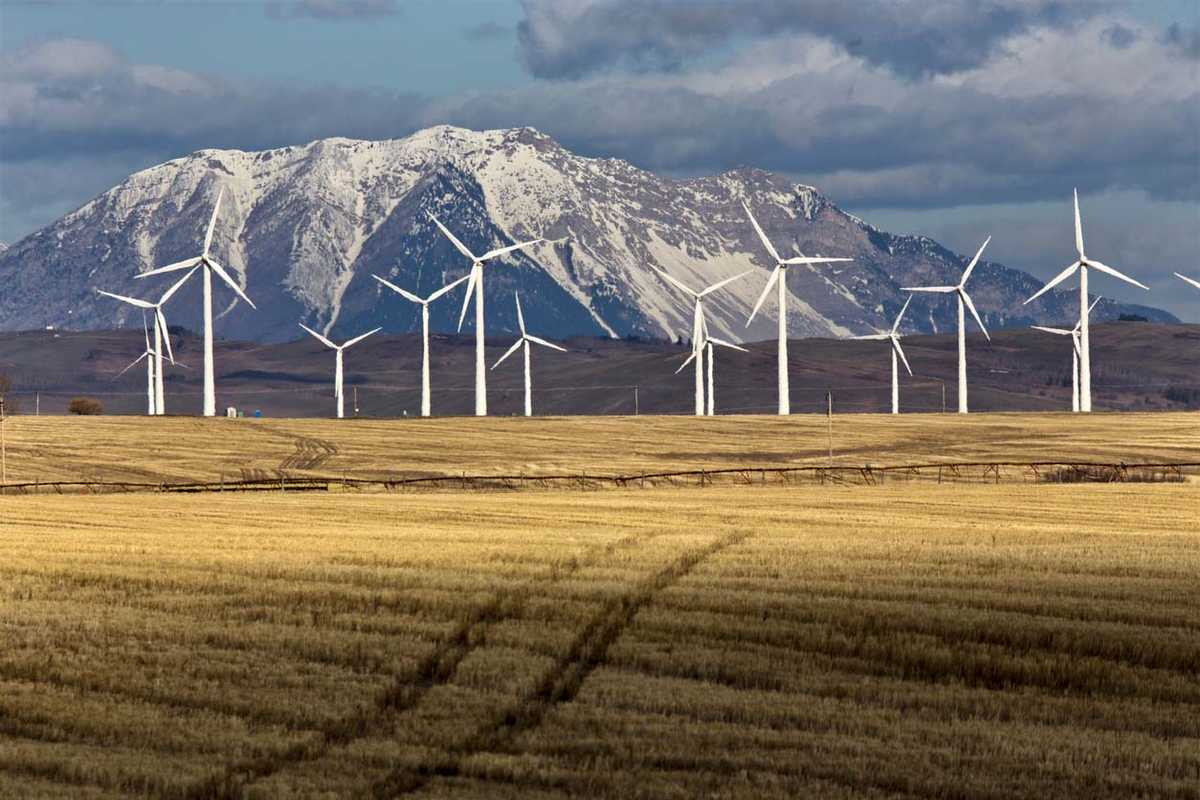Did you know that the contemporary array of renewable energy technologies relies on non-renewable resources? Many are unaware that fossil fuels, owing to their high energy density, play a crucial role in manufacturing essential components of renewables, spanning from wind and solar to hydro and even nuclear.
A prime illustration of the intricate connection between renewables and non-renewables lies in the fact that the production of glass, cement, and steel demands exceptionally high levels of heat that are challenging to achieve without burning fuel and are, thus, challenging to power with electricity.
Consider steel blast furnaces operating at approximately 1,100°C, while cement kilns operate at about 1,400°C. Melting sand to produce glass needs roughly 1,700°C of heat via natural gas, a temperature akin to that reached by a space shuttle re-entering the Earth’s atmosphere.
Steel, cement, and glass constitute significant components of wind turbines, hydro dams, and solar panels. The production of these renewable technologies also demands a substantial amount of minerals and metals, which are categorized as non-renewables.
Rather than positioning renewables against non-renewables, it is essential to acknowledge how one makes the other feasible. It’s crucial to realize that utilizing non-emission sources of energy such as wind, solar, hydro, and nuclear can contribute to reducing power generation emissions linked to fossil fuel production.
The truth is that global energy demand is on the rise, necessitating the utilization of all available forms to provide the world with the energy it requires.
Wind Turbines
Producing wind turbines necessitates a substantial extraction of materials from mining activities. While wind energy itself is a renewable source, the essential minerals and metals essential for manufacturing wind turbines are not renewable.
To illustrate, constructing a single wind turbine demands 900 tons of steel, 2,500 tons of concrete, and 45 tons of non-recyclable plastic.
Wind turbines rely on at least four rare earth minerals – neodymium, praseodymium, dysprosium, and terbium. The construction of towers and blades involves materials such as carbon fiber, aluminum, and/or steel. Notably, carbon fiber is made feasible through polyacrylonitrile, a derivative of petroleum.
The transportation, installation, and maintenance of wind turbines also depend on conventional, non-renewable energy sources and petroleum-based products.
The wind energy infrastructure underscores the intricate interdependence between renewables and non-renewables, highlighting how each relies on the other in this dynamic relationship.
Solar Panels
Solar panel farms may require even more cement, steel, and glass than wind turbines, not to mention other critical minerals like silver and indium.
However, what many are unaware of is that coal is a crucial component in solar panel production. The raw material is utilized to create a chemical known as polyvinyl chloride (PVC), an extremely toxic and hazardous substance.
To manufacture a single solar panel, approximately 11 tons of coal – equivalent to 3,000 pounds – must be combusted in a furnace under high temperature and pressure. This process is achievable only due to the concentrated energy inherent in burning fossil fuels.
The framework supporting solar panels is typically constructed from anodized or powder-coated aluminum. Concurrently, the platforms on which these installations are situated may be made of concrete, also relying on non-renewable materials.
Hydro Dams
Extensive quantities of cement are essential for constructing hydro plants, encompassing the dam, reservoir, and the infrastructure for electricity production.
The Hoover Dam in the State of Nevada, USA, serves as a striking illustration of the immense volume of cement required for a hydro dam. According to the U.S. Bureau of Reclamation, constructing the dam necessitated 3.25 million cubic yards of cement. In total, there are 4.36 million cubic yards of concrete encompassing the dam, power plant, and associated structures.
To grasp the scale of these figures, the colossal amount of concrete could construct a monument measuring 100 feet in length and width and towering over 2.5 miles high. Placed on a standard city block, this structure would surpass the height of the 1,250-foot-tall Empire State Building OR pave a standard highway, 16 feet wide, from San Francisco to New York City.
Cement, sourced from mined materials like limestone, sand, and clay, underscores the reliance on non-renewable resources for constructing renewable infrastructure. Moreover, the turbines and other steel components within any hydro dam are made feasible by the high energy density of fossil fuels.
Nuclear Plants
Nuclear power plants, another category of non-emission electricity sources, also demand substantial quantities of cement, steel, and mined materials during their construction.
For instance, a facility generating 1,000 kilowatts (1,000 kilowatts = 1 megawatt, or MW) necessitates 40 metric tons of steel and 190 cubic meters of concrete. Consequently, a nuclear power plant with a capacity of one gigawatt (GW) (1,000 MW) would require 40,000 metric tons of steel and 190,000 cubic meters of concrete.
To provide context, the U.S. housed 93 operational nuclear reactors by the end of 2021, collectively generating approximately 95,500 MW, or roughly 1 GW each.
To replicate the construction of all 93 U.S. nuclear power plants, each with 1 GW capacity, would demand 3.72 million metric tons of steel and 17.7 million cubic meters of concrete.
This substantial requirement for cement and steel underscores their reliance on non-renewable energy sources and materials.
How Energy Companies in the Fossil Fuel Sector Are Embracing Alternative Energy
Here are a few instances of how natural resource companies are incorporating renewable energy to reduce greenhouse gas (GHG) emissions:
- November 2021: Shell is launching a significant solar farm project to decarbonize operations at its Scotford facility near Edmonton, Alberta. This large-scale solar installation in the heartland of the province is set to commence supplying electricity to the refinery by late 2023.
- September 2021: ATCO Gas, a utility provider in Alberta, committed to constructing Calgary’s largest urban solar project. With 175,000 bifacial solar panels covering an area equivalent to approximately 170 Canadian football fields, the project is expected to generate sufficient renewable electricity to power over 18,000 homes, offsetting 68,000 tonnes of carbon annually.
- September 2021: TC Energy, a major oil and gas pipeline operator in Canada, entered into a power purchase agreement for the entire output of the 297-megawatt (M.W.) Sharp Hills Wind Farm in Alberta. This wind farm will produce enough electricity to meet the needs of more than 164,000 average Alberta homes, resulting in a saving of approximately two billion liters of water annually.
- June 2021: The Oil Sands Pathways to Net Zero Alliance, dedicated to achieving net-zero GHG emissions, is exploring small modular nuclear reactors (SMRs) to facilitate the decarbonization of operations. SMRs could also play a role in powering carbon capture, utilization, and storage (CCUS) operations, aligning with the alliance’s commitment to reaching net-zero by 2050.
Energy & the Environment Are Not Mutually Exclusive
Canadians don’t have to make an either-or choice between supporting renewables or non-renewables – we can embrace both!
Canada is already a global leader in non-emission electricity production, with 67 percent of its domestic supply generated by renewables and an additional 15 percent by nuclear. Moreover, several Canadian provinces and territories already derive over 95 percent of their electricity from renewable sources, primarily hydro.
While being the world’s fourth-largest producer of crude oil and sixth-largest for natural gas, Canada also boasts the ninth-largest installed capacity of renewable energy.
As evident, fossil fuels and wind, solar, hydro, and nuclear must work in unison – renewables cannot exist without non-renewables. With global energy demand continuing to grow for decades, discussions about our energy future should take an inclusive approach where we don’t have to choose between supporting renewables or non-renewables; we can say “yes” to both.
Without a balanced and fact-based perspective, progress is hard to achieve!




